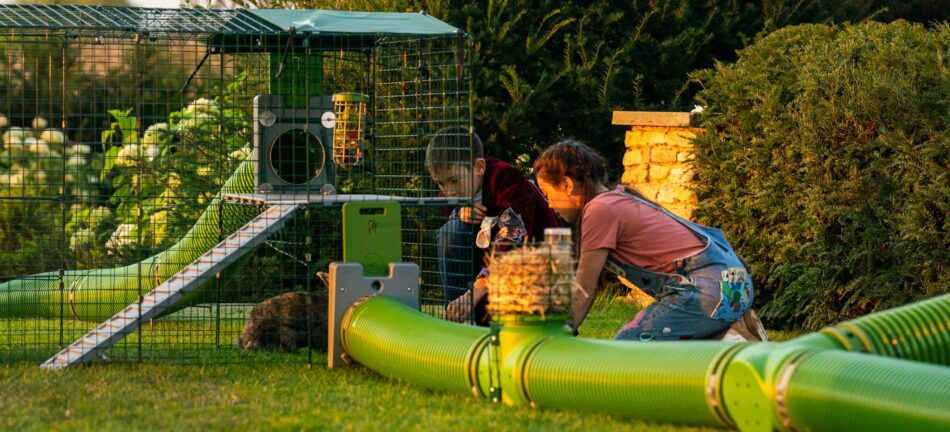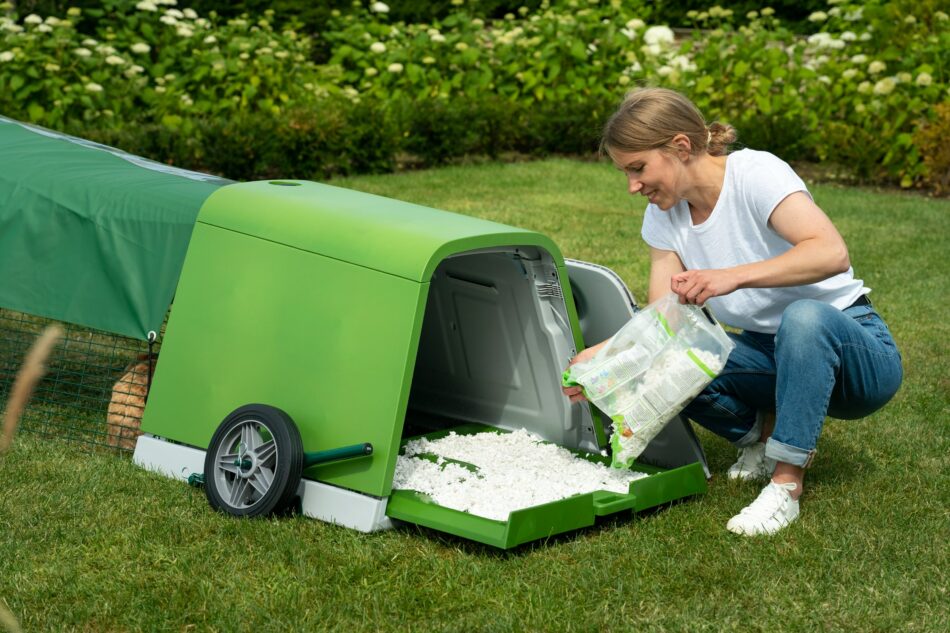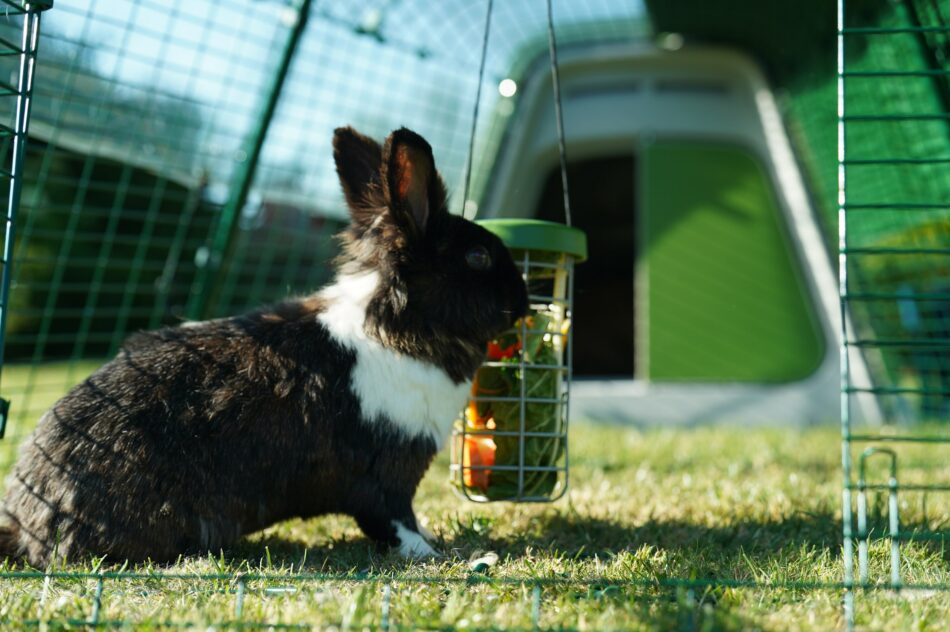Rabbits and flystrike
Thankfully, rabbits and flystrike aren’t a common pairing when bunnies are well cared for. Healthy rabbits that can groom themselves and have a clean environment are not easily affected by flystrike. But as prey animals, rabbits are very good at masking their discomfort – so it’s important to know what flystrike is, how to prevent it, and how to treat it.
What is flystrike?
Flystrike, also known as myiasis, is a condition where animals that live outdoors become infested with fly larvae (maggots). In rabbits, flystrike begins when Lucilia sericata (green bottle fly) lays eggs on their skin. When the maggots hatch, they take up residence on your rabbit – eating through the skin and eventually invading the deeper tissue beneath. As awful as this condition is, it’s not common in healthy bunnies. The majority of rabbits that suffer from flystrike are:
- Those that cannot groom themselves due to obesity or other illness
- Living in unsanitary housing conditions
- Soiled from urine or feces, or wounded
If your rabbit’s coat becomes overly dirty (caked on droppings, urine-soaked, or constantly damp from the weather) or their living conditions become so soiled that droves of flies are drawn to them, they are at risk of flystrike. Flies are part of living outdoors and small numbers of these flying pests are not usually cause for alarm. But, when flies are attracted to the dirty, smelly coat of a rabbit in less-than-ideal conditions, trouble sets in.
Flystrike is most common during the summer months when flies are the most active. Warmer temperatures are hospitable for maggots, and flies are in abundance this time of year. And, with more rabbits laying in the cool grass or shade during the heat of the day, flies can easily seek them out. Bringing your rabbit indoors during the hottest part of the day may help abate the nuisance from flies.
Do indoor rabbits get flystrike?
Indoor rabbits can get flystrike, but it is much less common than if they lived outdoors. The same conditions apply for indoor rabbits to become affected by flystrike, and it’s less likely that those living indoors would have unsanitary coats or living conditions. And, houses tend to have fewer flies inside than the outside world.
Keeping your home clean with indoor rabbits is essential to avoiding flies. If you’re bringing your outdoor rabbits inside for brief periods during the day, make sure you’re not bringing flies in with them. Clean their indoor spaces daily to deter flies from accumulating.
6 signs & symptoms of flystrike in rabbits
Flystrike can occur rapidly, as maggots can hatch within mere hours of eggs being laid. Maggots seek out a food source as soon as they hatch, meaning your rabbit is in imminent danger of becoming a host for them. Bunnies may exhibit any of the following signs if they’re suffering from flystrike, so it’s important to perform regular rabbit health checks to evaluate their health.
1. Presence of maggots
The first symptom of flystrike is the presence of maggots. Fly larvae start out small and are worm-like in appearance. Flies lay their eggs on the part of the animal they are most drawn to. In the case of rabbits, this will usually be around the tail where urine and feces are most likely to be present.
2. Lethargy
Your rabbit may appear listless or dull when they’re in pain. Flystrike causes extreme discomfort, so your bunny is likely to be less active and will be hesitant to move in most cases. Lethargic rabbits may also spend more time inside of their hutch.
3. Loss of appetite
Most animals (rabbits included) will be off of their feed when they aren’t feeling well. If your rabbit isn’t eating or drinking, there’s a good chance there’s something going on with them. Flystrike can cause a weakened or dehydrated rabbit to go downhill rapidly.
4. Increased digging
Agitated rabbits in pain may dig more in an effort to relieve their discomfort. Look for signs of your rabbits digging in corners in particular. Claw marks on the inside of hutches, outside in the run, or in bedding can be telling of a rabbit in pain.
5. Odor from enclosure
As you can imagine, flystrike causes a foul odor. The smell of the decaying flesh that the maggots leave in their wake is not a subtle sign. This sign usually occurs as flystrike progresses to a dire level.
6. Shock
The final stage of flystrike is shock. Shock sets in when a rabbit’s body is overwhelmed by pain, infection, or external stressors. Flystrike brings all of these conditions, making it very dangerous for rabbits. Symptoms of shock include:
- Rapid breathing
- Pale mucous membranes (eyes, gums)
- Seizures
- Unconsciousness or collapse
- Death
If you notice any maggots on your rabbit, or any of the above signs or symptoms, be sure to contact your bunny’s veterinarian right away. Prompt treatment is necessary to combat flystrike.
Which rabbit breeds are more prone to flystrike?
Any breed of rabbit can fall victim to flystrike, but some may be more susceptible than others depending on environmental factors. Lionheads or Angora rabbits have longer coats than other breeds that can become soiled quickly without regular grooming. Large breeds like the Flemish Giant are more prone to obesity due to their size, and overweight rabbits can’t groom themselves as thoroughly as bunnies that are the ideal weight.
How to prevent rabbit flystrike
Keeping your rabbit’s home clean is one of the most important and effective ways to prevent flystrike. Cleaning your rabbit’s hutch and refreshing their bedding daily in the summer is essential to combating flies. The Eglu Go Plastic Rabbit Hutch by Omlet can be thoroughly cleaned in just a few minutes each day, and has ample ventilation to prevent odors from building up. The expandable attached run gives rabbits plenty of room to run and lounge, spreading out their droppings to further deter flies from gathering.
For even more space to escape flies, our Zippi Rabbit Tunnel System can be connected to your hutch and rabbit playpen to create a larger area. You can also add platforms to playpens to encourage more exercise and prevent your rabbits from becoming overweight. Combined with a balanced bunny diet, Zippi Rabbit Platforms will help your furry family members stay in tip-top shape.
How to treat rabbit flystrike
Flystrike is a medical emergency and you should contact your rabbit’s veterinarian right away to prevent irreversible damage. Do not attempt to treat or remove burrowed maggots yourself, as pieces can break off inside of your rabbit and cause infection. Rabbits with flystrike will need prescription antibiotics and pain medication to make a full recovery.
Omlet and caring for your rabbit
Omlet’s rabbit products help keep your rabbits healthy and happy. Our easy-to-clean designs were created to help owners spend less time cleaning and more time playing with their pets. The Eglu Go Rabbit Hutch, Zippi Rabbit Platforms, and Zippi Tunnel System are all easy to keep clean, and encourage more movement from your bunnies to promote overall health. Combat flystrike and other dangerous conditions when you house your rabbit in expertly crafted setups by Omlet.
This entry was posted in Rabbits



